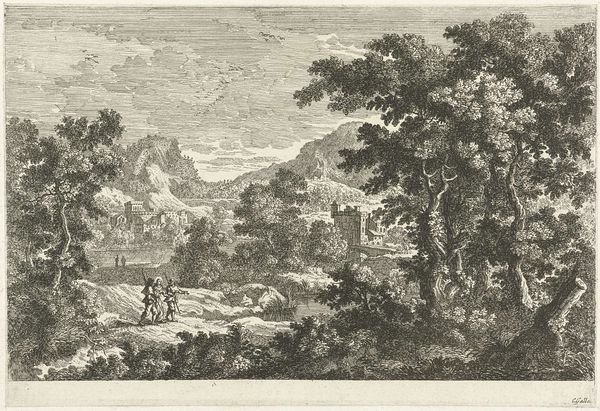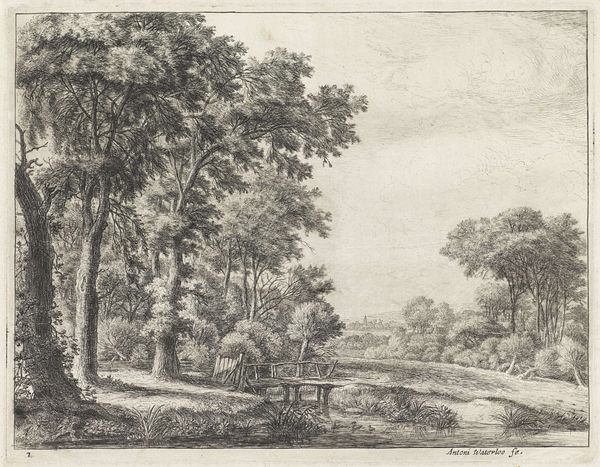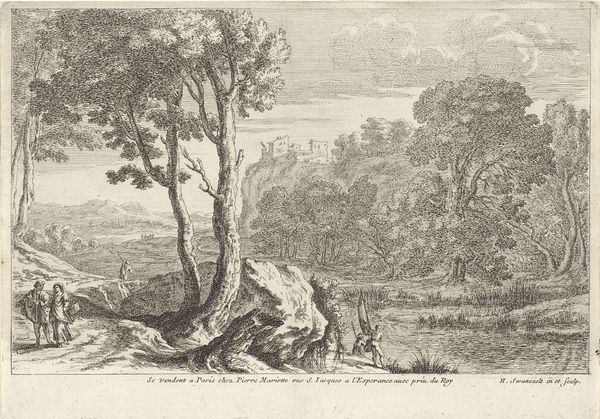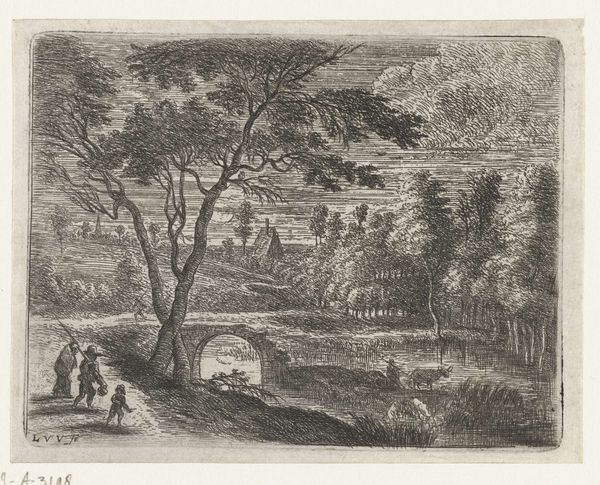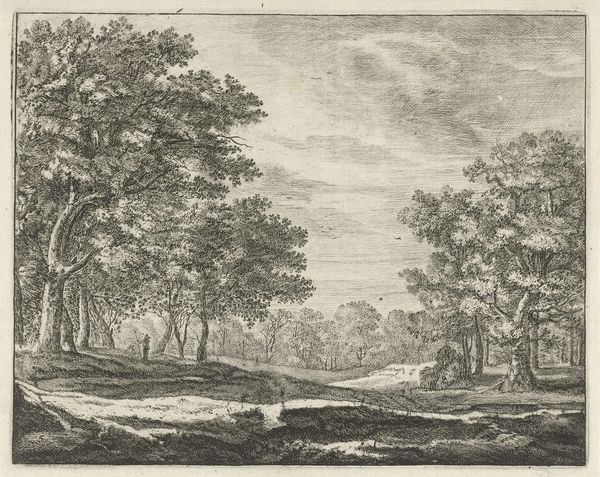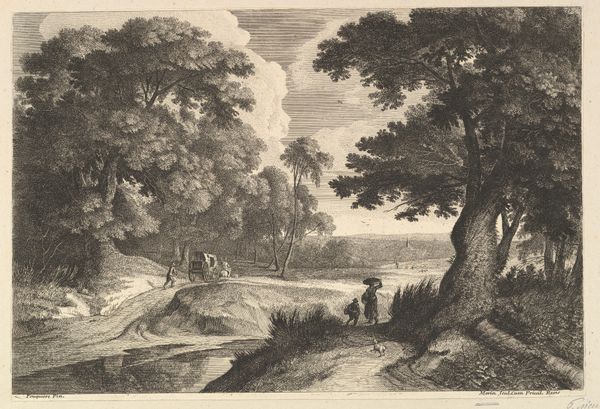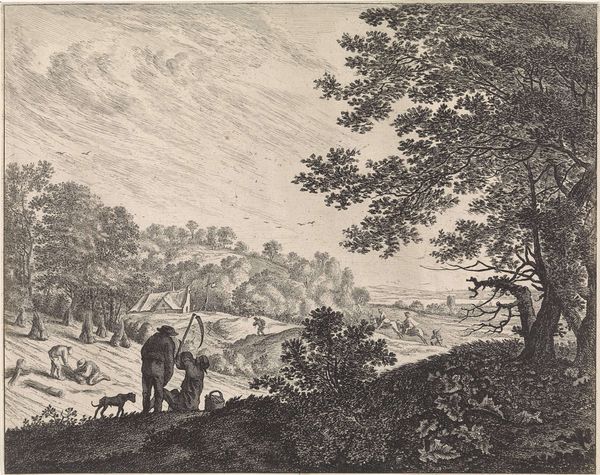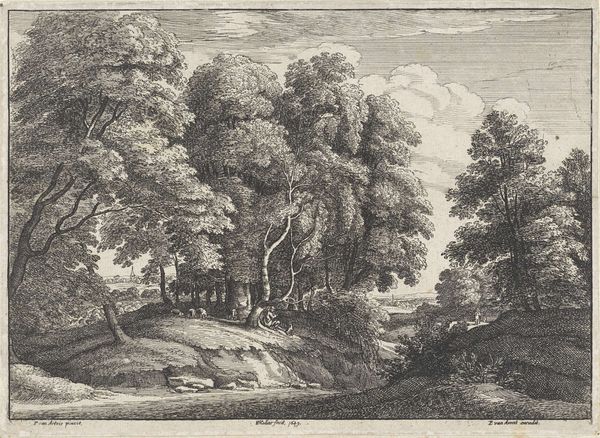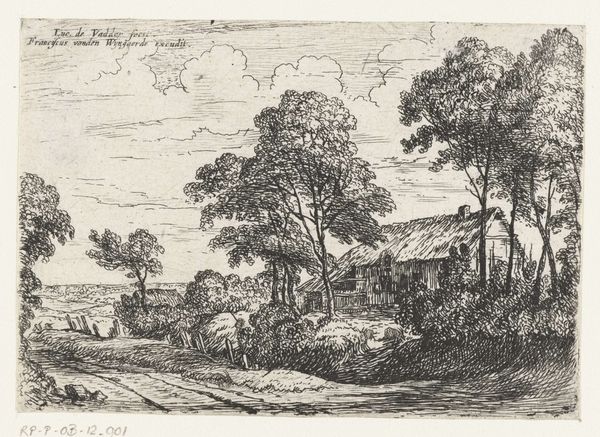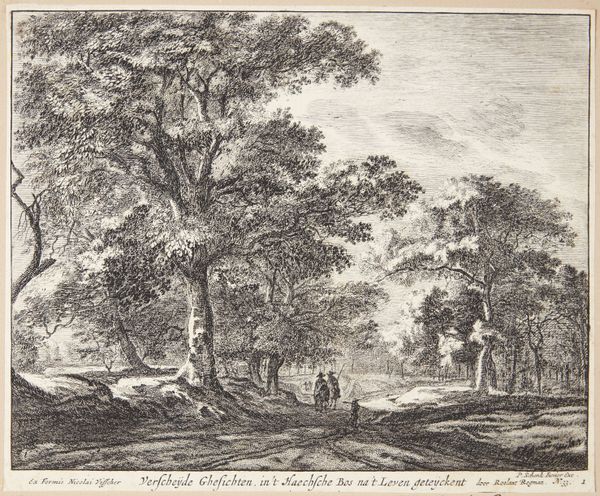
print, engraving
#
narrative-art
#
baroque
#
pen drawing
# print
#
landscape
#
figuration
#
line
#
engraving
Dimensions: height 278 mm, width 381 mm
Copyright: Rijks Museum: Open Domain
Editor: This is "Bosrijk landschap met een herder," or "Wooded Landscape with a Shepherd," an engraving from sometime between 1656 and 1726 by Johannes Glauber. It feels very dreamlike to me. What historical context should we keep in mind as we consider it? Curator: I’m immediately drawn to the figure of the shepherd and the sheep. How does this representation speak to broader social and political issues of its time? Consider the historical relationship between rural communities and urban centers. Was the shepherd idealized? Was he perhaps a stand-in for a disappearing way of life in the face of burgeoning capitalist ventures? Editor: So the engraving becomes more than just a pretty scene; it is actively taking a stance. Is it unusual to see those kinds of sentiments reflected in a landscape? Curator: Not necessarily. Baroque art was used as a means to create emotional reactions in viewers. Look at how the artist is positioning you, the viewer. What does that elevated point of view suggest about your social position, your gender, your class? We are given a space *from* which to evaluate, as powerful outsiders. Editor: So the artist has embedded commentary within the landscape by implicating the viewer's perspective and social station? It’s really thought-provoking how art can subtly engage in these conversations about power. Curator: Precisely! These landscapes offered ways to critique or, perhaps, subtly endorse societal norms. This creates the narrative. Are we looking from the perspective of a landed nobleman, a merchant, or some other figure of importance? Editor: I hadn't considered that. It definitely makes me reconsider my initial read. I’m leaving with a deeper appreciation for the layered meanings and the historical narratives woven into this idyllic scene. Curator: And that awareness helps us think critically about representation and power dynamics across historical periods and social contexts.
Comments
No comments
Be the first to comment and join the conversation on the ultimate creative platform.
